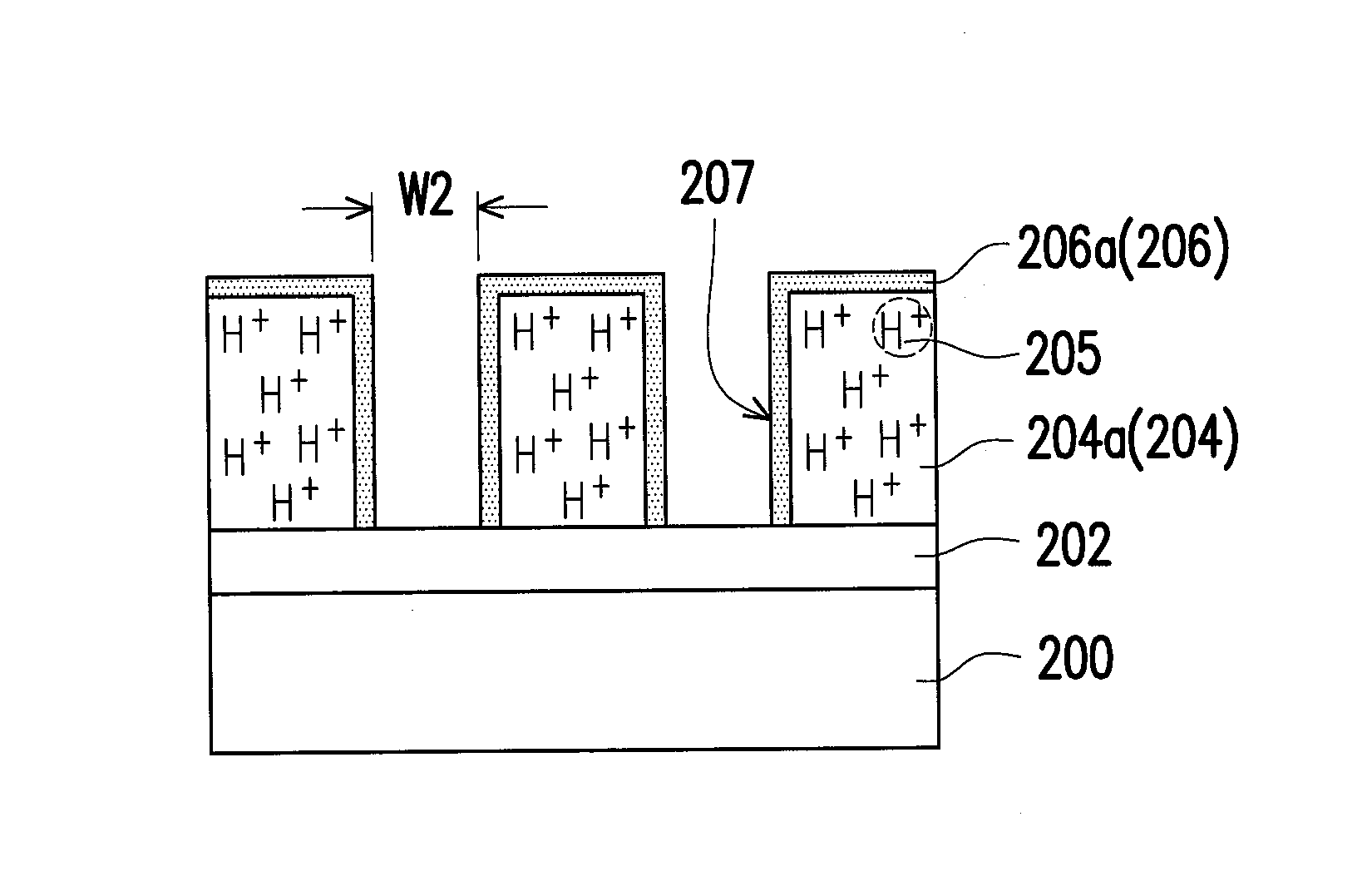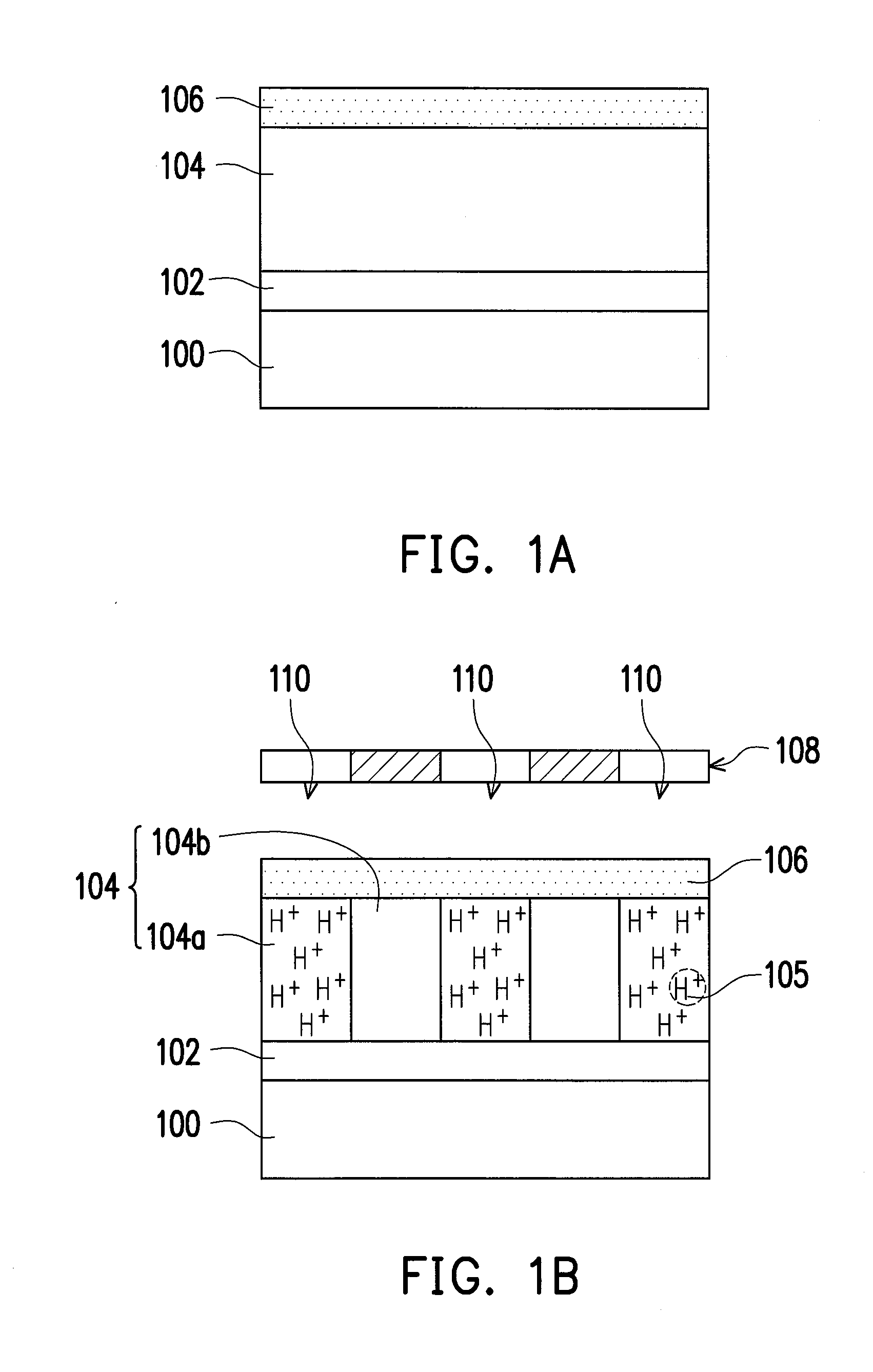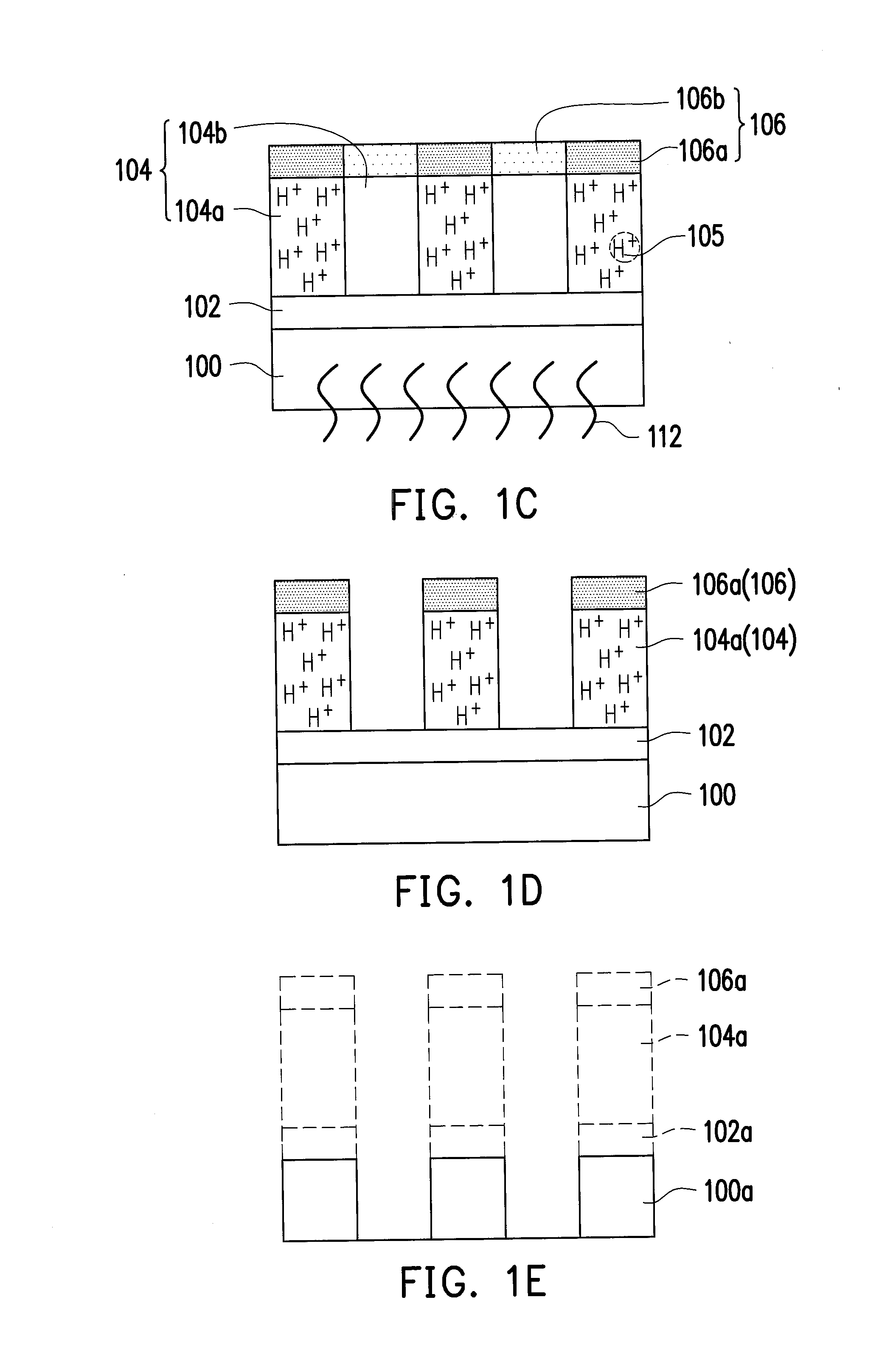Patterning method
a technology of semiconductors and layers, applied in the field of semiconductor processes, can solve the problems of traditional lithography's limitation on printing small geometry beyond the resolution of photolithography, and the need for thinner photoresist layers, and achieve the effect of reducing device dimensions and effective photoresist thickness
- Summary
- Abstract
- Description
- Claims
- Application Information
AI Technical Summary
Benefits of technology
Problems solved by technology
Method used
Image
Examples
first embodiment
[0033]FIG. 1A to FIG. 1E are schematic cross-sectional views of a patterning method according to a first embodiment of the present invention.
[0034]Referring to FIG. 1A, an optional bottom anti-reflection coating (BARC) layer 102 and a photoresist layer 104 are sequentially formed on a target layer 100. The target layer 100 includes a conductive material, a dielectric material, a semiconductor material or a combination thereof. The BARC layer 102 is configured to reduce the light reflection from the underlying layer(s). The photoresist layer 104 includes a positive photoresist material, such as a 365 nm (I-line) photoresist, a 248 nm (KrF) photoresist, a 193 nm (ArF) photoresist, a immerion-193 nm (immersion-ArF) photoresist or any suitable photoresist. The method of forming each of the BARC layer 102 and the photoresist layer 104 includes performing a spin coating step.
[0035]In an embodiment, the photoresist layer 104 can include a photosensitive resin, a photo-acid generator and a ...
second embodiment
[0044]FIG. 2A to FIG. 2F are schematic cross-sectional views of a patterning method according to a second embodiment of the present invention.
[0045]Referring to FIG. 2A, an optional BARC layer 202 and a photoresist layer 204 are sequentially formed on a target layer 200. The photoresist layer 204 includes a positive photoresist material, such as a 365 nm (I-line) photoresist, a 248 nm (KrF) photoresist, a 193 nm (ArF) photoresist, a immerion-193 nm (immersion-ArF) photoresist or any suitable photoresist. The method of forming each of the BARC layer 202 and the photoresist layer 204 includes performing a spin coating step.
[0046]Referring to FIG. 2B, the photoresist layer 204 is exposed to light 210 through a photomask 208. During the exposing step, a photo acid 205 is generated in first regions 204a of the photoresist layer 204. The photo acid 205 includes a hydrogen ion (H+), for changing the polarity of the exposed first regions 204a. In an embodiment, after the exposing step, the ...
PUM
| Property | Measurement | Unit |
|---|---|---|
| etching resistance | aaaaa | aaaaa |
| semiconductor | aaaaa | aaaaa |
| feature density | aaaaa | aaaaa |
Abstract
Description
Claims
Application Information
 Login to View More
Login to View More - R&D
- Intellectual Property
- Life Sciences
- Materials
- Tech Scout
- Unparalleled Data Quality
- Higher Quality Content
- 60% Fewer Hallucinations
Browse by: Latest US Patents, China's latest patents, Technical Efficacy Thesaurus, Application Domain, Technology Topic, Popular Technical Reports.
© 2025 PatSnap. All rights reserved.Legal|Privacy policy|Modern Slavery Act Transparency Statement|Sitemap|About US| Contact US: help@patsnap.com



